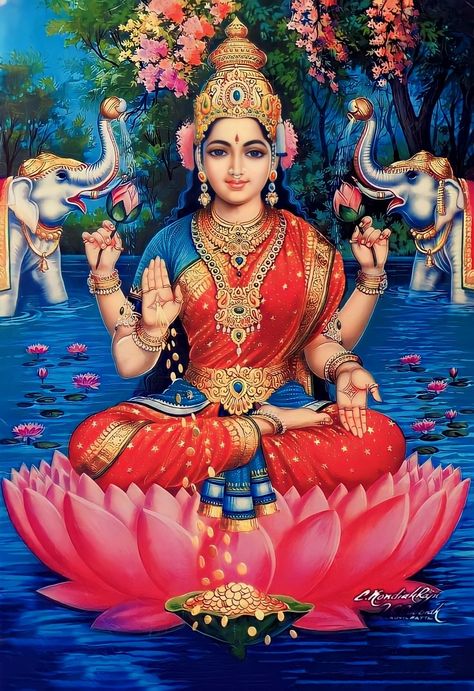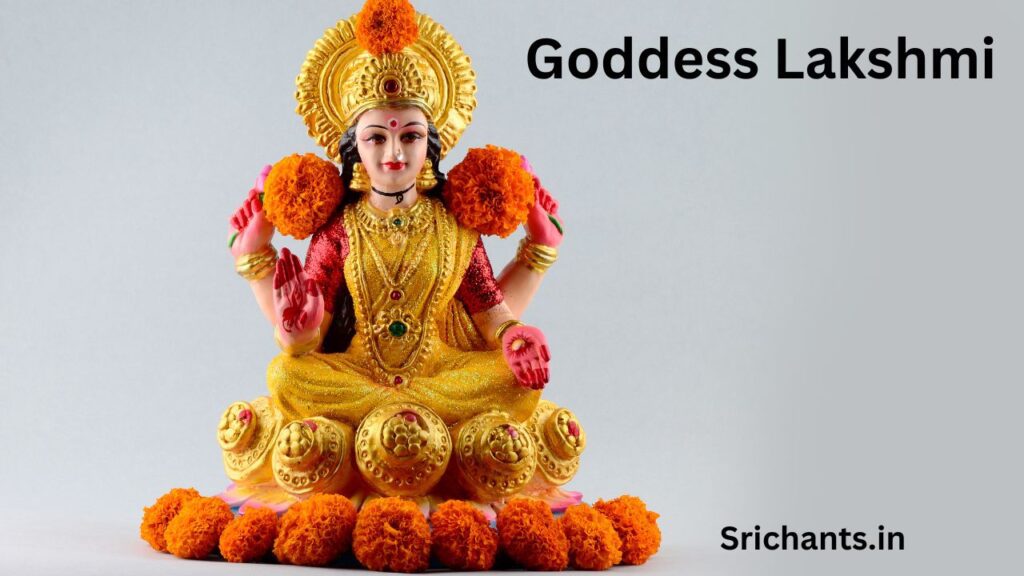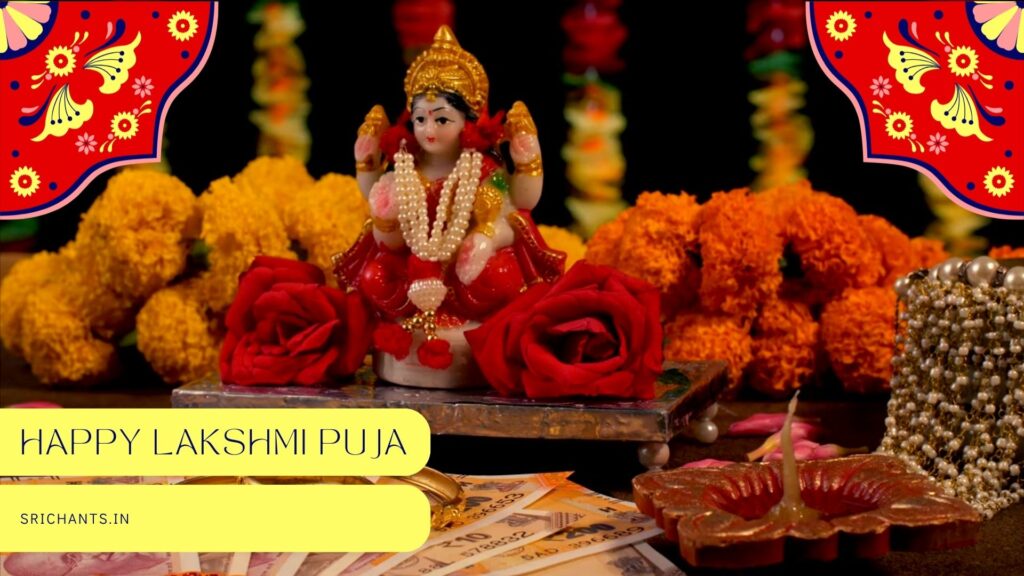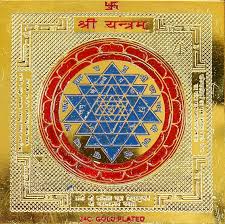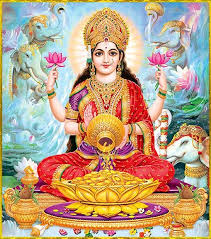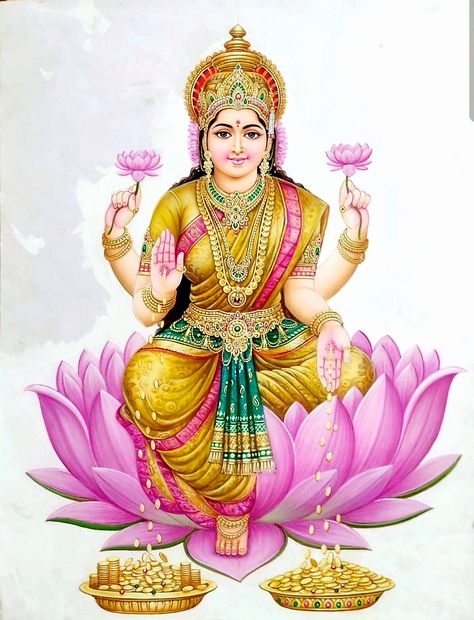Lakshmi goddess: Maha Lakshmi for Prosperity and Abundance
Introduction
Lakshmi, the goddess of affluence, prosperity, and good fortune, is a divine figure that stands out in the rich tapestry of Hindu mythology with unparalleled grace and significance. Lakshmi’s influence is pervasive in every aspect of spiritual and material existence, as her presence is woven into the very fabric of Hindu culture as the consort of Lord Vishnu, the preserver of the universe.
Lakshmi’s origins can be traced back to the ancient churning of the cosmic ocean, where she emerged seated on a magnificent lotus, emanating divine splendor and Beauty. For millennia, her iconography, which is replete with symbolic imagery, has captivated the affections of devotees, establishing her as one of the most revered and celebrated deities in the Hindu pantheon.
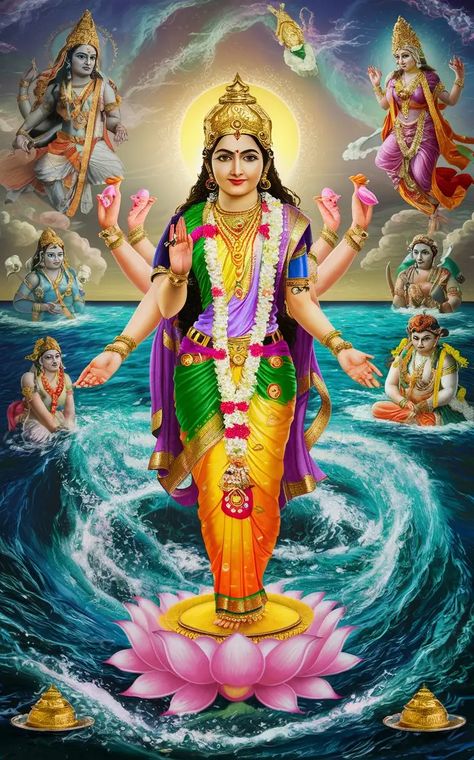
Lakshmi’s Multifaceted Essence
Lakshmi is a deity of multifaceted essence who embodies a diverse array of attributes and blessings. The divine embodiment of spiritual abundance, grace, and auspiciousness, she is not merely the personification of material prosperity. Her four limbs are purported to symbolize the four fundamental objectives of human existence: kama (desire), artha (prosperity), dharma (righteousness), and moksha (liberation).
Abundance and Prosperity
Lakshmi, the deity of wealth and prosperity, is frequently depicted as sitting on a lotus, dispensing golden coins from her hands. This image symbolizes her capacity to bestow material abundance and financial success upon her devotees. The lotus flower, which symbolizes purity, fecundity, and spiritual enlightenment, is associated with her, serving as a reminder that genuine prosperity is not limited to the material world.
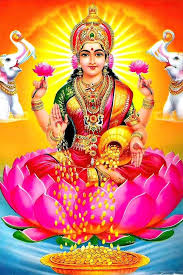
Spiritual Enlightenment
Lakshmi’s divine presence is also felt in the domain of spiritual enlightenment. She is regarded as a mentor who assists devotees in their pursuit of moksha, the ultimate objective of Hindu spirituality, and self-realization. It is believed that her blessings foster a deeper connection with the divine, inner calm, and wisdom.
Fertility and Auspiciousness
In addition to her association with spirituality and prosperity, Lakshmi is also revered as a goddess of auspiciousness and fertility. She is frequently depicted with elephants, which are symbols of good fortune, power, and fortitude. It is believed that the inclusion of elephants in Hindu iconography bestows blessings of prosperity and abundance upon households and communities.
The Eight Manifestations of Lakshmi
Hinduism acknowledges eight unique manifestations of Lakshmi, each of which symbolizes a particular aspect of her divine essence. The Ashtalakshmi, a collective term, refers to these eight forms:
- Adi Lakshmi: The primordial form of Lakshmi, which symbolizes the primordial energy of the universe and spiritual riches.
- Dhana Lakshmi: The deity of material wealth and prosperity, who is frequently depicted holding a pot of gold or other treasures.
- Dhanya Lakshmi is the goddess of agricultural prosperity, who is associated with crops, food, and nourishment.
- Gaja Lakshmi, the goddess of power, fortitude, and courage, is frequently depicted holding lotus flowers and riding an elephant.
- Santana Lakshmi is the deity of progeny, who is linked to fertility, motherhood, and children.
- Veera Lakshmi, the goddess of fortitude, bravery, and valor, is frequently depicted holding a sword and shield.
- Vidya Lakshmi is the deity of knowledge and wisdom, who is linked to the arts, education, and learning.
- Vijaya Lakshmi is the goddess of triumph, accomplishment, and victory, frequently depicted with a sword and a lotus flower.
The divine mother’s graces and guidance are sought by devotees in various aspects of their lives, and each of these eight manifestations is revered and worshipped.
Lakshmi’s Relationship with Lord Vishnu
A central tenet of Hindu theology is Lakshmi’s divine partnership with Lord Vishnu, the preserver of the universe. Lakshmi is considered to be the embodiment of Vishnu’s divine energy and the source of his vitality, as she is his consort. Lakshmi bestows the blessings of abundance and prosperity, while Vishnu provides the guiding principles. Collectively, they symbolize the ideal equilibrium between the spiritual and material domains.
Lakshmi’s avatars frequently accompany Vishnu’s incarnations, as evidenced by Sita’s association with Rama and Rukmini’s with Krishna. Lakshmi’s grace and Vishnu’s protection function in unison to preserve the cosmic order and guarantee the universe’s welfare, as this symbolic union emphasizes the divine couple’s inseparable bond.
Lakshmi in Hindu Festivals and Celebrations
Lakshmi’s worship and veneration are paramount throughout the year, as she is profoundly ingrained in the fabric of Hindu festivals and celebrations. The festival of Diwali, also referred to as the “Festival of Lights,” is the most significant of these. It is observed in honor of Lakshmi.
Hindus perform a comprehensive cleaning and decoration of their residences during Diwali, in the belief that this will facilitate the bestowal of her blessings of prosperity and abundance by Lakshmi. Diyas, which are rows of lights, are illuminated to greet the goddess, and offerings of flowers, sweets, and other auspicious items are presented in order to secure her favor.
Lakshmi puja, a ceremony and ritual that is specifically designed to pay tribute to the deity, is an essential component of the Diwali festivities. This practice entails the recitation of sacred mantras, the invocation of Lakshmi, and the offering of petitions for spiritual and material well-being.
Lakshmi is commemorated and revered during the fourth through sixth nights of the nine-night Navaratri festival, in addition to Diwali.
The Symbolic Significance of Lakshmi’s Iconography
Lakshmi’s iconography is replete with symbolic significance, with each component of her visual representation conveying a profound spiritual and metaphorical significance. Every aspect of her divine image, from the lotus flower she is frequently depicted holding to her four-armed form, holds profound significance for devotees.
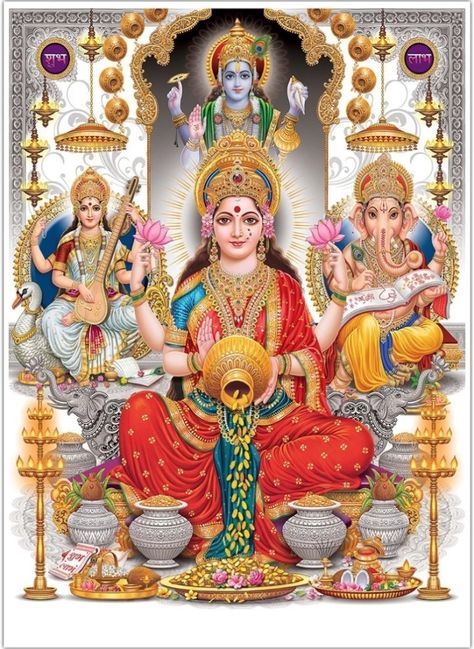
The Four Aims of Life and the Four Arms
Kama (desire), artha (prosperity), dharma (righteousness), and moksha (liberation) are the four primary goals of human existence (purusharthas) that are associated with Lakshmi’s four arms. This symbolism emphasizes the goddess’s capacity to direct her devotees toward the realization of these fundamental aspects of existence.
The Lotus Flower
In Hinduism, the lotus flower is a potent symbol that Lakshmi is frequently depicted bearing or seated upon. It symbolizes the capacity to transcend the material world, spiritual enlightenment, and purity, much like the lotus flower that emerges from the mud to blossom in resplendent beauty.
Coins and the Cornucopia
Lakshmi’s hands are frequently depicted as showering golden coins, symbolizing her function as the bestower of material wealth and prosperity. Another prevalent motif associated with the deity is the cornucopia, or horn of plenty, which symbolizes her capacity to offer an infinite supply of resources and blessings.
The Elephants
Elephants are regarded as emblems of strength, power, and good fortune, which is why their inclusion in Lakshmi’s iconography is so significant. The goddess’s capacity to honor her devotees with the gifts of prosperity and abundance is symbolized by the lustration of Lakshmi by a pair of elephants, a common representation.
Lakshmi in Hindu Temples and Households
Lakshmi’s influence is not limited to festivals and celebrations; she is profoundly revered and worshipped in Hindu households and temples year-round. On Fridays, Lakshmi is frequently celebrated in households through the performance of special rituals and offerings in order to obtain her blessings.
In the guise of the divine couple, Lakshmi is frequently depicted alongside her consort, Lord Vishnu, in temples. Lakshmi is revered alongside Vishnu at the Ranganatha temple in Srirangam, Tamil Nadu, and the Venkateswara temple in Tirupati, Andhra Pradesh, two of the most prominent Vaishnava centers.
The Shri symbol, which symbolizes Lakshmi and the concept of material prosperity, is also widely used, further emphasizing her presence. This symbol is frequently observed in Hindu households, businesses, and other auspicious locations, where it serves as a perpetual reminder of the goddess’s beneficent influence.
Lakshmi and the Concept of Alakshmi
The concept of Alakshmi, Lakshmi’s older sibling, is also acknowledged in the Hindu tradition. Alakshmi is the goddess of misfortune, distress, and poverty, and is considered the opposite of Lakshmi. This duality underscores the significance of preserving a virtuous and well-balanced lifestyle in order to secure Lakshmi’s blessings and prevent Alakshmi from interfering.
Hindus frequently participate in rituals and practices to appease Alakshmi, including the use of a nimbu mirchi totka, a talisman that is believed to be irresistible to the deity of misfortune. This talisman is composed of seven chili peppers and a lemon. The Hindu belief in the inherent balance of the universe, where light and darkness, prosperity and adversity, coexist in a delicate equilibrium, is underscored by the symbolic interplay between Lakshmi and Alakshmi.
Continued Relevance and Legacy of Lakshmi
Hindu culture and spirituality have regarded Lakshmi as a central figure due to her enduring legacy as the deity of wealth, prosperity, and good fortune. Her presence is profoundly ingrained in the fabric of Hindu festivals, rituals, and daily life, providing devotees with a consistent source of inspiration and guidance.
Lakshmi, the embodiment of spiritual enlightenment and material abundance, continues to captivate the hearts and minds of Hindus worldwide. Her iconography, which is timeless and replete with symbolic significance, serves as a potent reminder of the divine’s capacity to bestow blessings and direct the devout toward a life of prosperity and fulfillment.
Lakshmi’s message of balanced harmony and the transcendence of material wealth for spiritual development remains profoundly pertinent in a world that is constantly evolving. The goddess of fortune and good luck, who continues to be revered and cherished by Hindus, continues to influence the spiritual and cultural landscape of the Hindu faith as they continue to seek her blessings and guidance.
Conclusion:
Worshipping Lakshmi ma daily gives prosperity and luck.
#lakshmi #lakshmigoddess #goddesslakshmi #rich #wealth

